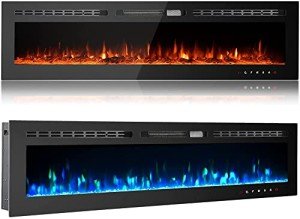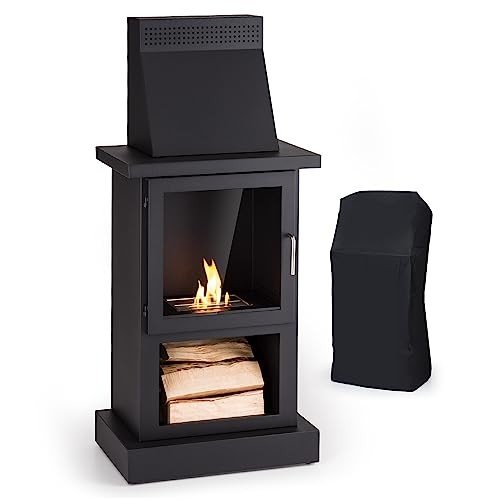
Best Fireplaces Uk
Add a review FollowOverview
-
Sectors Agriculture
-
Posted Jobs 0
-
Viewed 24
Company Description
Guide To Traditional Fireplaces UK: The Intermediate Guide Towards Traditional Fireplaces UK
The Timeless Appeal of Traditional Fireplaces in the UK
Traditional fireplaces have actually long been important to homes across the United Kingdom, transcending mere utility to end up being focal points of heat, comfort, and aesthetic appeal. This post looks into the enduring appeal of traditional fireplaces, exploring their history, design variations, setup factors to consider, and their modern-day relevance.
Historic Significance of Fireplaces
The fireplace has played a central function in British homes since middle ages times. Initially, they were necessary for heating and cooking. Over the centuries, with the development of main heating and technological advancements, fireplaces have actually changed into symbols of heritage and design.
Secret Historical Milestones
| Date | Turning point | Description |
|---|---|---|
| 12th Century | Introduction of Chimneys | Permitted indoor fireplaces to be typical, improved ventilation. |
| 16th Century | The Renaissance impact | Fireplaces ended up being more ornamental, reflecting the period’s styles. |
| 18th Century | The Georgian Era | Developed intricate mantels made from wood and stone. |
| 19th Century | Victorian Era | Introduction of cast-iron and tiled fireplaces. |
| 20th Century | Decrease and Modern Design | Shift towards gas and electric, with some revival of traditional styles. |
Types of Traditional Fireplaces
While contemporary designs focus on minimalism, traditional fireplaces often exemplify intricate workmanship and historical significance. Here are some popular types of traditional fireplaces commonly found in the UK:
-
Open Hearth Fireplaces
- Identified by a large opening and generally built from brick or stone.
- Supplies a cozy ambiance and the sound of crackling flames.
- Needs a correct flue to redirect smoke outdoors.
-
Wood-Burning Stoves

- Enclosed units that burn wood for heat, typically featuring a glass door.
- More effective than open hearths, providing better heat retention.
- Readily available in numerous styles, from rustic to contemporary.
-
Cast Iron Fireplaces
- Popular in the Victorian age, understood for elaborate styles.
- Resilient and prominent for outstanding heat conduction.
- Generally feature intricate patterns or themes, boosting aesthetic appeal.
-
Tiled Fireplaces
- Typically adorned with ornamental tiles, these fireplaces showcase artistic style.
- Common in the 19th century, tiles can include scenes or flower styles.
- Normally combined with wood or cast iron components.
-
Marble Fireplaces
- Popular for their beauty, these fireplaces are normally customized.
- Marble provides an elegant surface and complements different interior styles.
- They require cautious setup due to their weight.
Table: Comparison of Traditional Fireplace Types
| Fireplace Type | Heat Efficiency | Aesthetic Appeal | Upkeep Needs | Fuel Type |
|---|---|---|---|---|
| Open Hearth | Low | High | High (chimney cleaning) | Wood |
| Wood-Burning Stove | High | Moderate | Moderate (wood supply) | Wood |
| Cast Iron | High | High | Low | Wood/Gas |
| Tiled | Moderate | Very High | Low (if non-usable) | N/A |
| Marble | Moderate | Very High | Moderate | N/A |
Considerations for Installing a Traditional Fireplace
Setting up a traditional fireplace can enhance a home’s character however features particular factors to consider. Here are some points property owners must keep in mind:

-
Building Regulations: Always inspect local structure codes and regulations. Installation may need authorization, particularly if structural modifications are needed.
-
Product Selection: Choose materials that match the home’s architecture and personal style. Consider practicality alongside visual appeal.
-
Ventilation: Ensure correct ventilation through a chimney or flue to prevent smoke and gases from accumulating indoors.
-
Security Precautions: Install carbon monoxide detectors and ensure all precaution are in location, particularly if utilizing wood-burning choices.
-
Expert Installation: Engage a qualified specialist to make sure safe and efficient setup, complying with safety standards.
Advantages of Traditional Fireplaces
Regardless of the increase of modern heating solutions, traditional fireplaces remain cherished for several factors:
-
Aesthetic Charm
- Adds character to any room.
- Functions as a social centerpiece, boosting events.
-
Psychological Comfort
- Offers warmth not just physically however mentally.
- Develops a cozy atmosphere perfect for relaxation.
-
Value Addition to Property
- Boosts the appeal of a home to potential purchasers.
- Often increases property worth due to their desirability.
-
Environmental Considerations
- Wood can be a renewable resource when sourced sustainably.
- Traditional fireplaces can contribute less to energy bills compared to electric systems.
Often Asked Questions (FAQs)
1. Are traditional fireplaces energy effective?
While traditional fireplaces may not be as energy-efficient as modern heater, improvements in design, such as the setup of glass doors, can improve their performance. Wood-burning stoves are particularly understood for being more efficient than open hearths.
2. How frequently should traditional fireplaces be cleaned up?
Chimneys need to be inspected and cleaned up at least once annually, particularly if the fireplace is used routinely. This avoids creosote accumulation, which can lead to chimney fires.
3. Can I use a traditional fireplace for gas heating?
Yes, traditional fireplaces can frequently be transformed to utilize gas. This involves installing a gas line and might need a conversion kit depending upon the fireplace model.
4. What are the best fuels for wood-burning fireplaces?
Seasoned woods such as oak, hickory, or maple are suggested for wood-burning fireplaces as they burn hotter and longer than softwoods.
5. Can traditional fireplaces be utilized in modern homes?
Absolutely! Many modern designs integrate traditional elements, allowing for an unified mix of styles. Additionally, traditional fireplaces can add a distinct touch to contemporary homes.
From their historic significance to their modern-day relevance, traditional fireplaces stay a quintessential function in many UK homes. Their long-lasting appeal is not only rooted in their performance however also in the heat and appeal they provide. Whether one select a timeless open hearth or a magnificently tiled fireplace, the option contributes to creating an inviting environment where memories can be made. As homeowners become more conscious of aesthetic appeals and fond memories, traditional Fireplaces uk are poised to keep their attraction for generations to come.
